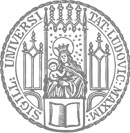
 The discovery of the earliest Buddhist manuscripts – written in Gāndhārī language and Kharoṣṭhī script and dating from the 1st c. BCE to the 4th c. CE – has revolutionized our understanding of this formative phase of Buddhism. On the way from India through Gandhāra to Central Asia and China, Buddhism turned into a world religion, and Gandhāra played a central role in the development of Buddhist scholasticism, Mahāyāna Buddhism and Buddhist art. The project ‘Early Buddhist manuscripts from Gandhāra: religious literature at the interface of India, Central Asia and China’ completes the edition of all known Gāndhārī manuscripts, contributes to the compilation of the Dictionary of Gāndhārī, and prepares a comprehensive Historical Grammar of Gāndhārī, Paleography of Kharoṣṭhī, and History of Gandhāran Literature and of Buddhism in Gandhāra. It collaborates with the Early Buddhist Manuscripts Project (University of Washington) in the study of the British Library collection of Gāndhārī scrolls and continues the work of the DFG project ‘The Bajaur collection of Buddhist Kharoṣṭhī manuscripts’ (Freie Universität Berlin, 2005–12). Funding is provided by the Union of the German Academies of Sciences and Humanities under the auspices of the Bavarian Academy of Sciences and Humanities.
The discovery of the earliest Buddhist manuscripts – written in Gāndhārī language and Kharoṣṭhī script and dating from the 1st c. BCE to the 4th c. CE – has revolutionized our understanding of this formative phase of Buddhism. On the way from India through Gandhāra to Central Asia and China, Buddhism turned into a world religion, and Gandhāra played a central role in the development of Buddhist scholasticism, Mahāyāna Buddhism and Buddhist art. The project ‘Early Buddhist manuscripts from Gandhāra: religious literature at the interface of India, Central Asia and China’ completes the edition of all known Gāndhārī manuscripts, contributes to the compilation of the Dictionary of Gāndhārī, and prepares a comprehensive Historical Grammar of Gāndhārī, Paleography of Kharoṣṭhī, and History of Gandhāran Literature and of Buddhism in Gandhāra. It collaborates with the Early Buddhist Manuscripts Project (University of Washington) in the study of the British Library collection of Gāndhārī scrolls and continues the work of the DFG project ‘The Bajaur collection of Buddhist Kharoṣṭhī manuscripts’ (Freie Universität Berlin, 2005–12). Funding is provided by the Union of the German Academies of Sciences and Humanities under the auspices of the Bavarian Academy of Sciences and Humanities.

